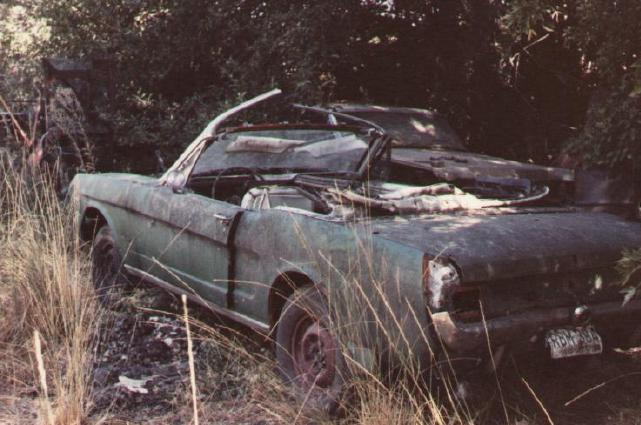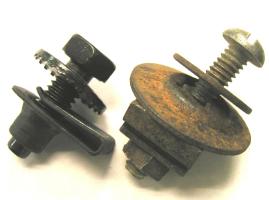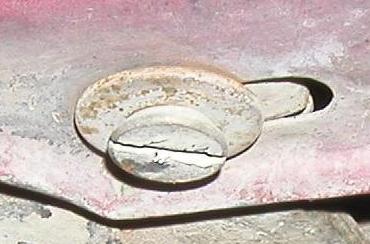

The car you start with is an important consideration. Most anything, with enough labor and parts, can be restored. Unfortunately, many old cars are not economically restorable.
Mustangs are seldom restored for monetary gain: more often it is the satisfaction of driving one of the most popular old cars ever. Or the thrill of seeing a family heirloom "rewarded" after nearly 40 years of faithful service. Or the interest in having the "new" car you always wanted when they really were new. If the car you want restored is the one mom bought new in 1966, or it is one of the six remaining German export Mach 1s, then choosing your starting point isn't relevant. In other cases, where "that particular" car isn't an issue, the car you start with has a lot to do with the cost, time, and end result of the restoration.
In the best cases, we begin our work on a Mustang that is 30 or more years old, and has either travelled well in excess of 100,000 miles or has been parked for extended periods of time.
In 100,000 miles: During the last 30 years, most cars we work on: One of these is the correct fastener: the other is what we often find . . . Incorrect fasteners add to costs by increasing the number of trips to the tool box for tools not normally required for a particular job, locating and installing correct fasteners, and correcting the damage caused by incorrect fasteners.
Items not normally intended to be wear items will be worn, and may require replacement.
The process of repairing or replacing components will be more difficult than it would have been 30 years ago due to:

- the crankshaft has turned approximately half a billion revolutions
- the brakes may have been applied 250,000 times
- the drivers door has been opened and closed 20,000 times
- there should have been at least 60 opportunities for the engine oil drain plug to be cross-threaded.
- have been in from one to five accidents.
- have had aftermarket stereos or alarm systems installed by amatuers or people working for near-minimum wage.
- have been repainted one to three times
- have components from cars of other styles or model-years, cars with different options, or from lower quality aftermarket sources.
- have been partially reassembled using methods resulting in damaged threads, oversized holes, holes where they don't belong, interference with moving parts, loose or damaged components, weather intrusion, and paint damage.


- accumulations of dirt, paint, adhesives, coatings, and lubricant residues.
- failure of weatherstrips, seals, sealants, and protective coatings
- metal fatigue, dry rot, ultraviolet radiation damage, galvanic corrosion, and rust
- past repairs that were amatuerish, industry standard, repetitive, incomplete, or deliberately poor quality to save money
- damage resulting from past accidents that was undiscovered or overlooked
- damage resulting from installation of non-factory components
- normal wear which has occurred for many years longer than the designed life of the vehicle.